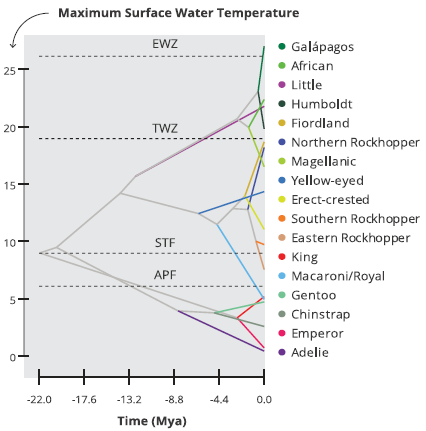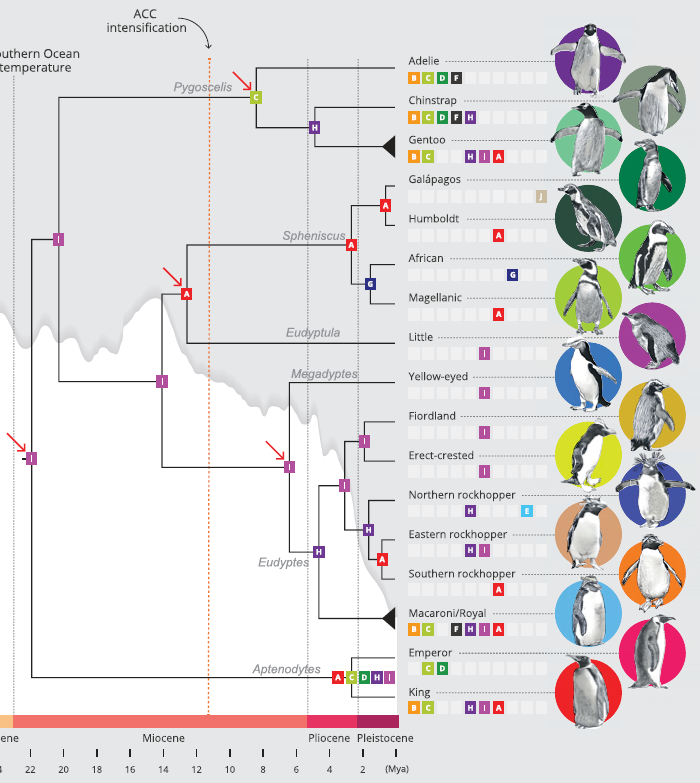A rigorous new genomic study has homed in on exactly when and where modern penguins originated. The study suggests the flightless birds first appeared in Australian and New Zealand coastal waters about 22 million years ago, and it was later that they spread down south into the cooler Antarctic waters.
The expansive global study first gathered blood and tissue samples from 18 penguin species. The goal was to sequence the penguin genome and effectively chart their evolution as they spread across the world.
The genetic evidence indicates the first penguins appeared in the relatively warmer coastal waters of Australia and New Zealand. The researchers suggest modern penguins most likely arose between 21 and 22 million years ago, more recently than the previously hypothesized timeframe of up to 40 million years ago.
The study also helps validate the hypothesis that king and emperor penguins are the sister group to all other penguins. So the evolutionary path suggests king and emperor penguins quickly moved down into sub-Antarctic and Antarctic waters, rapidly developing the ability to tolerate the freezing temperatures.
The big penguin diversification, allowing them to spread more broadly across the globe, occurred around 12 million years ago. When Drake’s Passage (the space between the southern tip of South America and the South Shetland Islands in Antartica) opened enough to rev up the Antarctic Circumpolar Current, the flightless penguins began to populate warmer coastal regions in South America and Africa.
The researchers do note this incredible ability for penguins to adapt to such diverse climates was a slow evolutionary process that took place over millions of years. And despite this adaptive tendency the animals are significantly struggling with current environment disruptions due to climate change. Several species around the globe are in rapid decline suggesting the speed of climate change today is far too rapid for them to adapt.
https://newatlas.com/biology/gene-study-penguins-evolution-australia/

